PULVINATA var. PULVINATA
Synonym : Cotyledon pulvinata (Rose) Hooker f. (1903)
Type : Rose & Hough 4994, collected in Tomellin Cañon, Oaxaca, June 15, 1899.
Etymology : Lat. 'pulvinatus' = cushion shaped, strongly convex - for the cushion-like leaves.
Distribution : Mexico (Oaxaca).
First Description by Rose in Bulletin of the New York Botanical Garden 3: 5. 1903 :
Caulescent, 12 cm high, naked below, somewhat branching.
Young branches, leaves and sepals covoered with a dense white velvety pubescence.
Leaves clustered in a rosette at the top, obovate, tapering to a narrow base, 2.5 – 3 cm long, 2 cm broad, rounded at apex and apiculate, 5 – 6 mm thick.
Flowers in a leafy raceme, pedicels 10 – 12 mm long, bracteolate, sepals ovate, acute, unequal, the longest about half the length of the corolla ; corolla scarlet, sharply 5-angled, 18 – 20 mm long, pubescent without, the lobes apiculate.
Cytology : n = 23
Note :
Plants in habitat in Oaxaca :
.jpg)
.jpg)
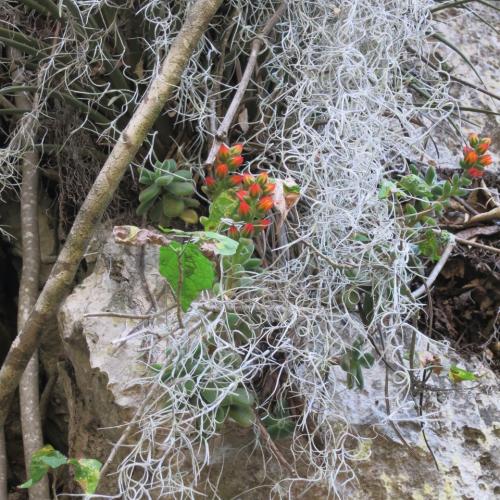
Photos Catherine Philips
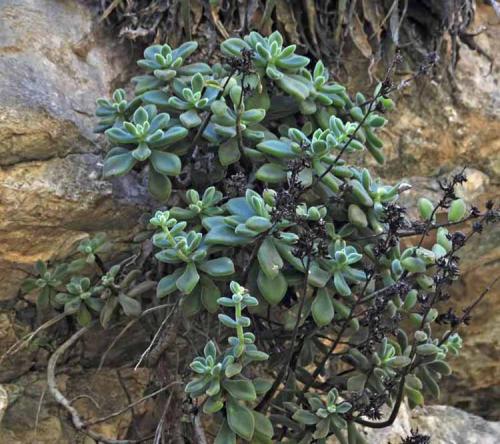
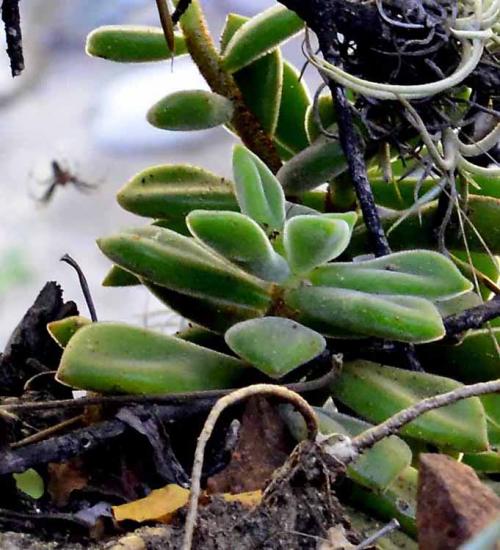
Photos Mieke Geuens
Plants in cultivation
usually represent the cultivar E. pulvinata 'Ruby', described and named by B.K. Boom (Succulenta 36(7): 73-76.1957) from a plant in cultivation without known origin. It differs from the type in
- narrower and more pointed leaves,
- margins and tips of leaves and sepals intensely red and
- keel of petals a darker orange.
E. Walther’s description (Echeveria, 394, 1972) indicating that the hairs have "a more intense, more wide-spread rusty colour" obviously is not correct.
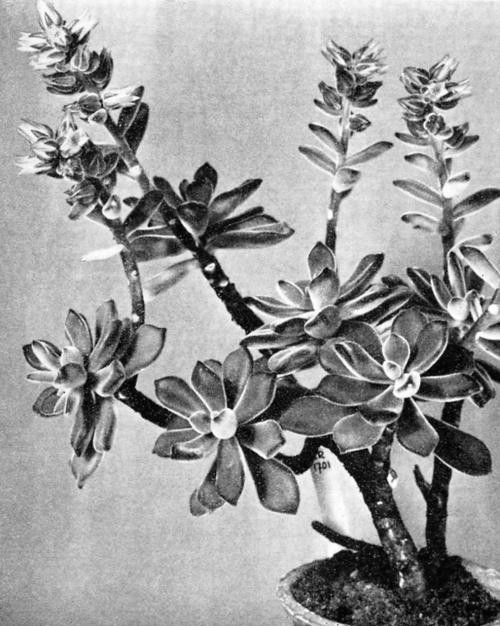
Echeveria pulvinata 'Ruby' protologue photo.
This form seems to be far more widespread in collections than the type which lacks the reddish margins.
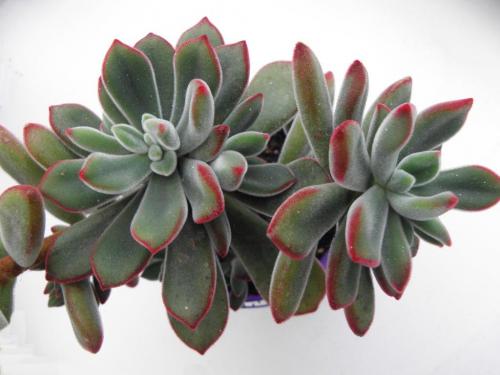
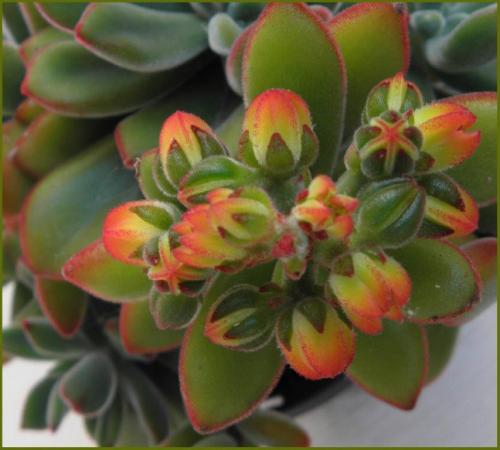
Photos Joan Steele
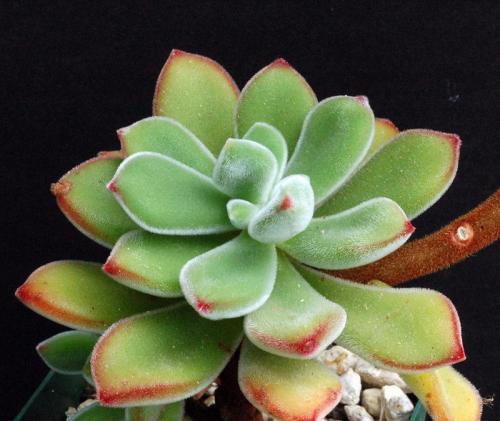
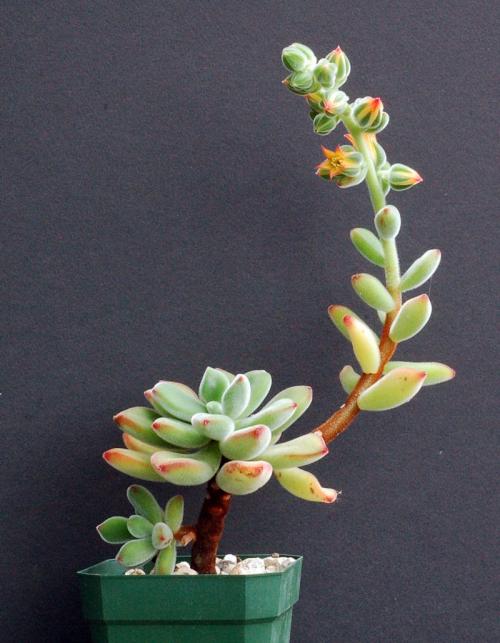
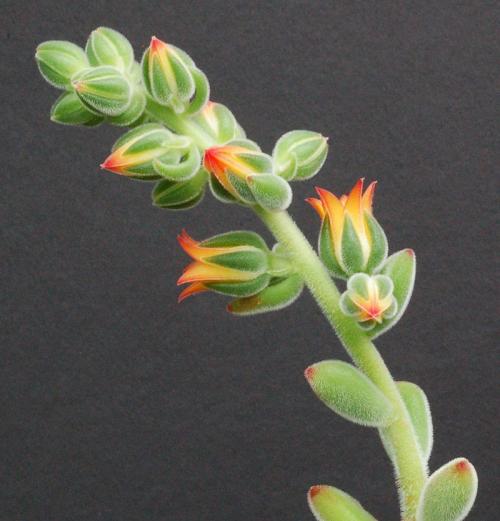
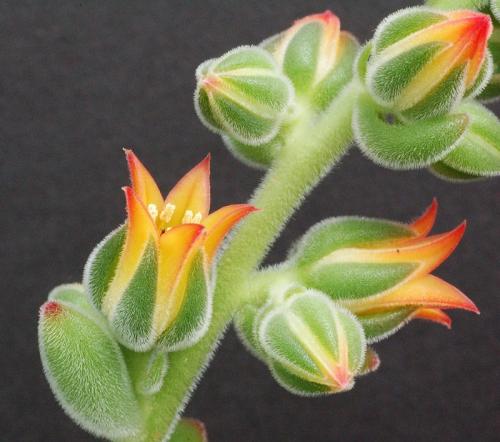
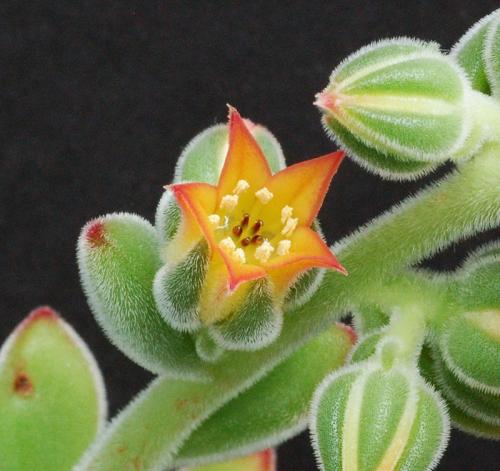
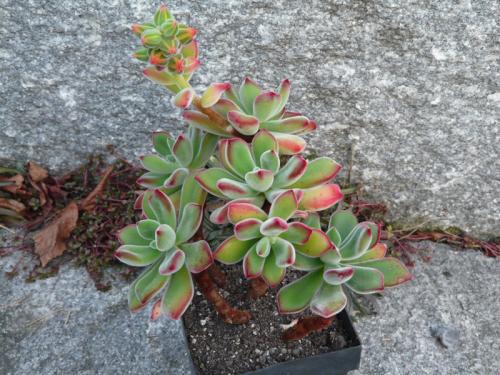
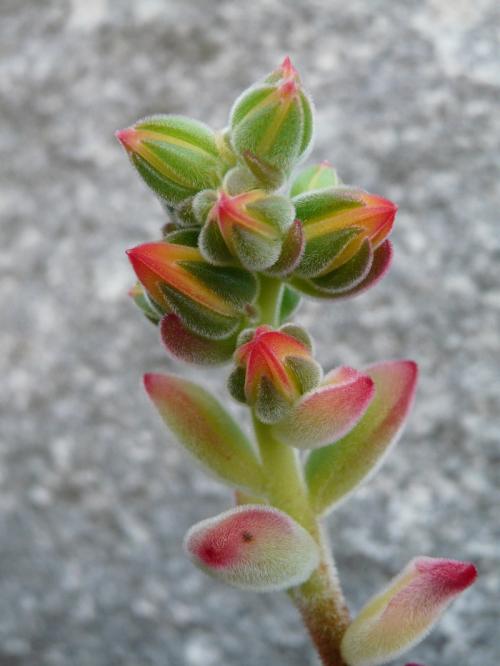
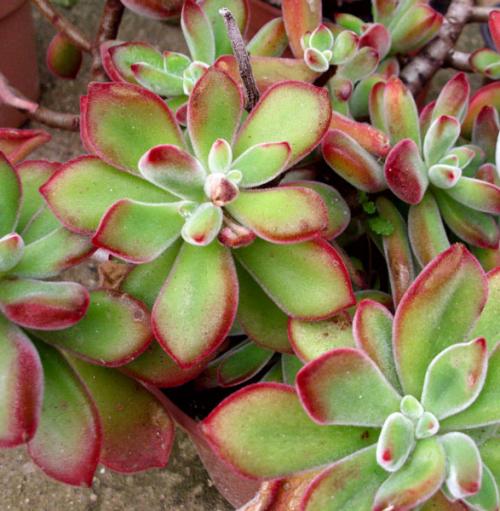
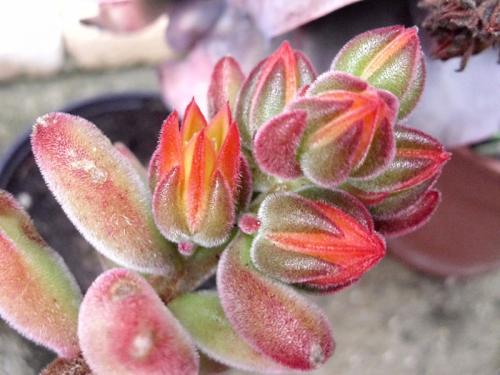
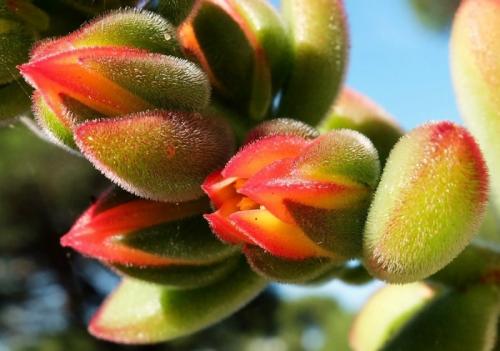
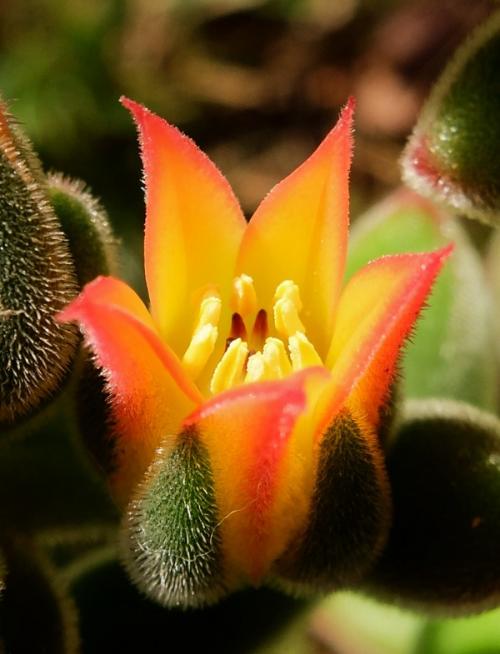
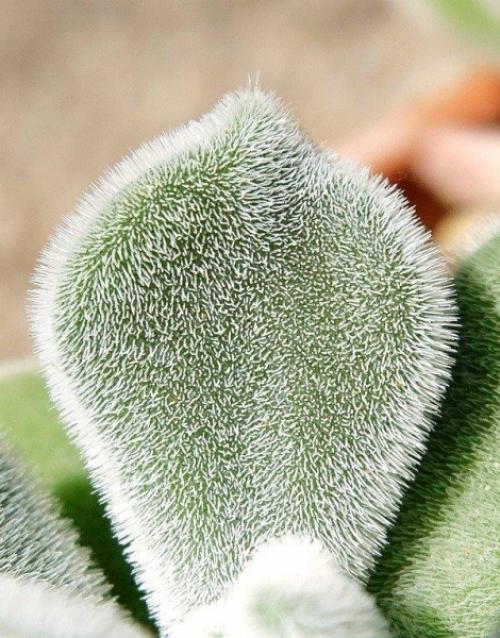
Photos Thomas Delange